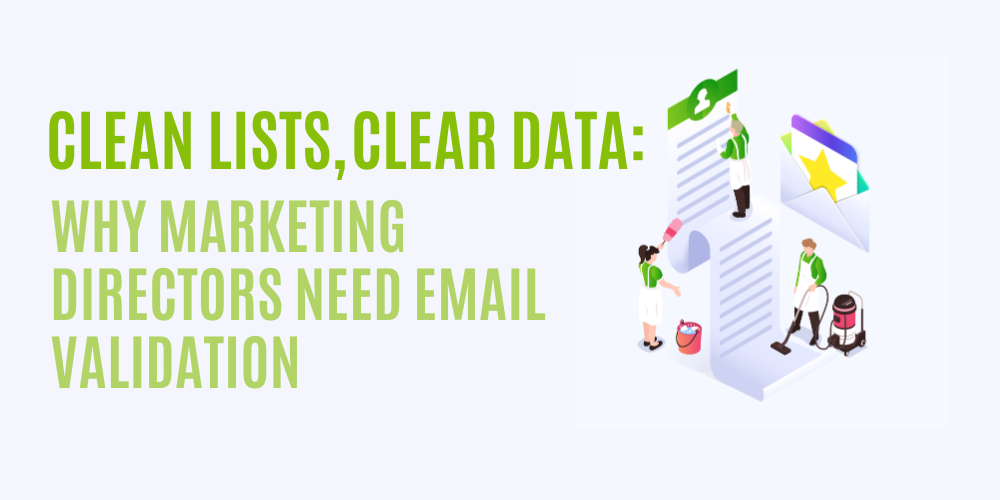16 email verification terms with simple explanations
When your list is validated you get detail from us about the results. Email Hippo results have two levels. The first level is the headline; Success, Bad, Retry Later, Unverifiable. Then we give you more detail, to help you understand your email data in more depth.
Here's a link to our free download Email verification guide to results that details all these terms and more. The download also includes suggestions about what to do next when you see your results.
Here’s what our most frequently seen terms mean;
- Server is Catch-All
- Retry later
- Domain is well-known DEA
- Server does not support international mailboxes
- Possible spam trap detected
- Mailbox does not exist
- No MX servers found
- Domain is inexistent
- At sign not found
- Too many at signs found
- Grey Listing
- Tarpitting
- Success
- Transient network fault
- Mailbox full
- None
- Unknown
Catch-All
“Catch-all” mail servers take emails to a central domain for manual inspection. We identify emails with these domains as unverifiable as, well, they can’t be verified. A surprising amount of businesses use catch-all mail servers.
Retry later
Means we tried to validate the email but the domain server wasn’t available. It might be a network fault, or that the server couldn’t cope with our processing speed so we need to do as it tells us and try later to prove that we are good guys, not a threat.
Domain is well known DEA
If you’re using our real time email verification API and you get this response we have probably saved you from fraudulent activity. A DEA is a Disposable Email Address, i.e. one that someone uses for a short period of time and has little or no intention of ever using again. There is a significant link with these disposable, or 'burner' email addresses and online fraud. We might change this result to, “Whoa, back up the truck, don’t let these guys anywhere near your check-out!” Bottom line. Don’t bother mailing to disposable email addresses.
Server does not Support International Mailboxes
We can’t verify emails if they contain characters that the server does not recognise and if the server is not set to use Punycode to translate the characters. (Punycode isn't something most non-technical people will be bothered with. If you want to find out about it, there's a link at the end of this article.)
Possible spam trap detected
We think the email address is a spam trap so we tell you it’s a bad one and you shouldn’t mail to it. What’s a spam trap? There are different types, but a spam trap is an email address that is monitored, but not used. So you couldn’t have it on your list as a result of genuine opt-in. The chances are if you mail to it you will be reported for spam. This is similar to seeded emails, which are placed onto lists you may buy. A seeded email address is monitored and your usage will be checked in accordance with any licence terms that apply. (To read more about spam traps, check out our free guide.)
Mailbox does not exist
This one just says what it is. No mailbox, therefore a bad email address. Like a front door without a mailbox.
No MX servers found
No mail exchange (MX) server is defined for the domain the email contains, so the email address is an undeliverable one. No MX, no delivery. Easy. Ha - in fact, like a mailbox without a front door!
Domain is inexistent
If it doesn't exist you can’t mail to it. The domain is the bit after the “@” and before the “.” by the way. So in our case, it's emailhippo (support@emailhippo.com)
At Sign Not Found
Leading on from our domain troubles above, no “@” means it’s not an email address.
Too Many At Signs Found
Little rascals. Just one “@”per email please or it isn’t an email address.
Grey Listing
When we tap a mail server to see if an email address is good, we’re sometimes told to try again later. This is because the server is set up to respond with a delaying tactic to make sure the email poke isn’t coming with malicious intent. If you’re using our API in real-time (so testing email addresses immediately) a grey listing result is recorded as unverifiable. When we check emails in bulk we can do as we’re told and come back again later to find out if the email address is OK.
Tarpitting
Like grey listing. This happens when we're put on a "go slow" by a server that's set up to sloooooooow things doooooown to prevent spammers from blasting bad emails around. We get caught up in it too, even though we're the good guys. Que sera sera.
Success
Email address is valid, you’re good to go.
Transient Network fault
Something went wrong with the connection in the briefest of moments when we tried to verify the address. Give it another go later and the result could be different, like when the guy from IT comes to fix your computer and it works without him doing anything. BUT, please don’t keep trying to verify an email address with a transient network fault endlessly. The fault may be one that’s just bad and not be resolved so it could waste your time and money.
Mailbox Full
If the box is full you can’t cram your email into it and it’s not going to be read any time soon. We tell you when a mailbox is full as we think you should avoid sending another email to it. Maybe come back to it next time to see if the status has changed. It might be a legitimate situation where a user needs a bigger mailbox, but it’s more likely to just be out of date and full of rubbish. If you are running marketing campaigns and regularly mailing, lots of full email inboxes will mess with your campaign results.
None
We don’t know anymore than that. There is simply no extra information available to interpret because we haven't been given anything. We get None results when the mail provider is just doing stuff that only they know they are doing and there is no code result to cover whatever it is. Might be ad-hoc shut downs, or tests, might be just closing things down.
Unknown
We don’t know whether it is deliverable or undeliverable. It’s like the exception to prove the rule. Sometimes (very rarely) we just don’t know what to say, but if there wasn't an 'Unknown' SMTP code you can bet your bottom dollar that it would immediately be needed.
Learn about spam traps - download the free guide
Interested in Punycode? Read more about what it is here.






